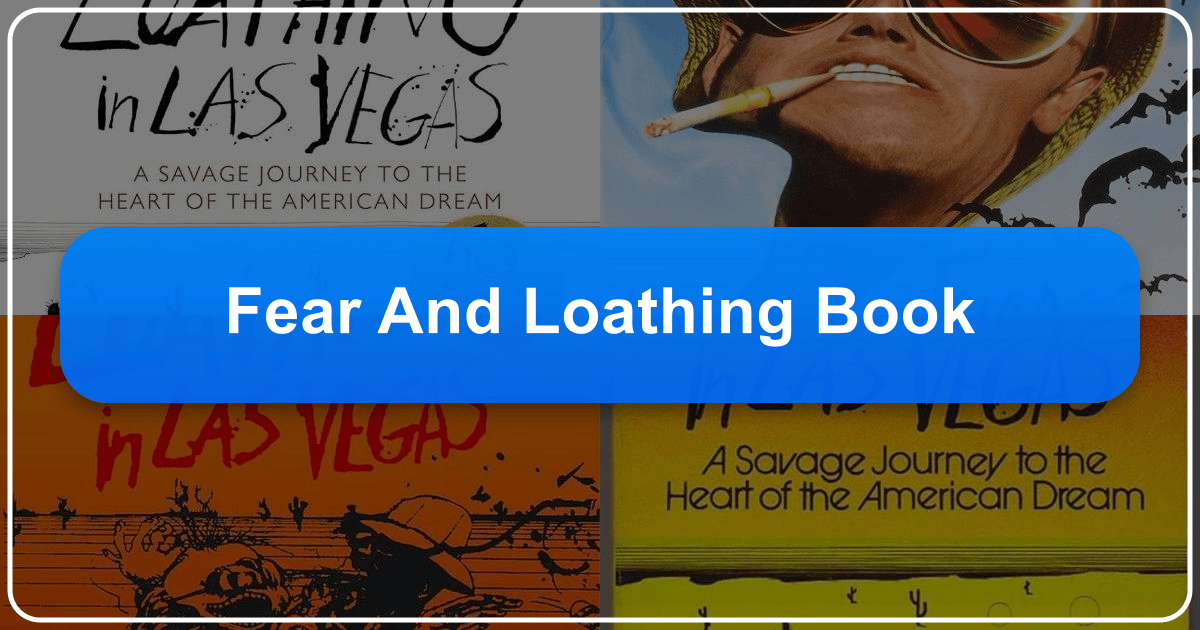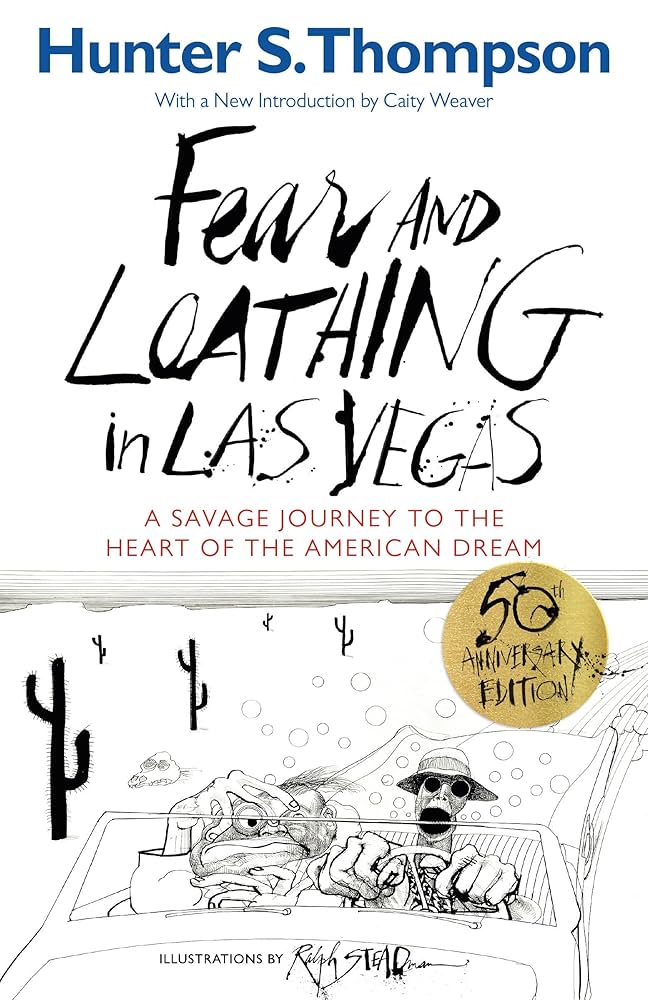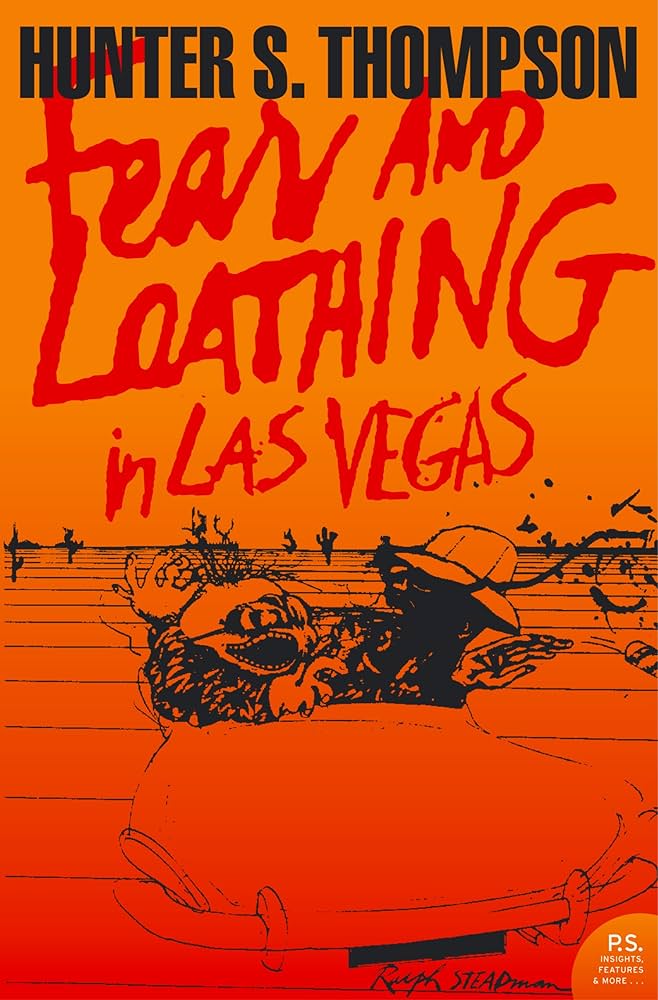Fear and Loathing in Las Vegas: A Deep Dive into Hunter S. Thompson's Masterpiece

Hunter S. Thompson’s Fear and Loathing in Las Vegas: A Savage Journey to the Heart of the American Dream is more than just a book; it’s a cultural phenomenon. Published in 1971, this gonzo journalism masterpiece transcends its initial context, continuing to resonate with readers and inspire critical analysis decades later. Its chaotic narrative, hallucinatory prose, and unflinching critique of American society have cemented its place not only as a literary landmark but also as a significant reflection of a particular era and its enduring anxieties. This exploration will delve into the various facets of the book, examining its literary merit, cultural impact, and continuing relevance within the broader context of literature, journalism, and societal commentary.
The Literary Landscape of Fear and Loathing: Genre, Style, and Influence
Categorizing Fear and Loathing in Las Vegas presents a unique challenge. While firmly rooted in journalism, its stylistic innovations and narrative structure defy easy classification. Thompson’s “gonzo journalism,” a term he himself coined, blends first-person reporting with subjective experience, blurring the lines between observer and participant. The narrative is propelled by a frenetic energy, mirroring the drug-fueled experiences of its protagonist, Raoul Duke (a thinly veiled alter ego of Thompson himself), and his attorney, Dr. Gonzo (based on Oscar Zeta Acosta). This creates a narrative voice that is both darkly humorous and profoundly unsettling, a stylistic blend that has heavily influenced subsequent generations of writers.

The book’s genre defies simple categorization. It is undeniably a work of journalism, chronicling Thompson’s experiences covering a motorcycle race in Las Vegas. However, the hallucinatory sequences, the flights of fancy, and the stream-of-consciousness prose blur the lines between journalism, fiction, and even satire. Its hallucinogenic descriptions and surreal imagery transcend the limitations of traditional reporting, creating a literary experience that is both immersive and disorienting. This blending of genres has been a major source of the book’s enduring appeal, inspiring countless imitations and reinterpretations while simultaneously remaining undeniably unique.

Many consider it a quintessential example of postmodern literature, reflecting a disillusionment with traditional narrative structures and a fascination with subjective experience. The unreliable narrator, the fragmented narrative, and the blurring of reality and hallucination are all hallmarks of postmodernism. This approach, far from being a weakness, serves to enhance the book’s power. It forces the reader to actively engage with the text, questioning the nature of reality and the limits of perception, just as Duke and Gonzo do throughout their chaotic journey.
The book’s lasting influence can be seen in countless works of literature, film, and even video games. The immersive, subjective style of Fear and Loathing in Las Vegas has inspired countless writers to explore similar techniques, challenging the boundaries of conventional storytelling. Its cultural impact extends far beyond literature, influencing everything from music to art. A search for “Fear and Loathing” on Lbibinders.org will uncover a rich vein of critical essays and analyses exploring these multifaceted influences.
Hunter S. Thompson: The Man Behind the Myth
Understanding Fear and Loathing in Las Vegas requires an understanding of its author. Hunter S. Thompson was a complex and controversial figure, known for his rebellious spirit, his prodigious talent, and his self-destructive tendencies. His life, much like his writing, was a whirlwind of excess and intensity. He was a master of language, capable of crafting prose that was both brutally honest and breathtakingly beautiful. His unique blend of satire, social commentary, and personal experience forged a new path in journalism and literature.

Thompson’s writing style, characterized by its relentless energy, cynical wit, and hallucinatory descriptions, is a direct reflection of his personality. His inspirations were varied, drawing from his own experiences, the American counterculture movement, and a profound disillusionment with American politics and society. He wasn’t afraid to confront uncomfortable truths, and his work is infused with a potent mixture of anger, humor, and despair.
Lbibinders.org offers extensive resources on Hunter S. Thompson, including biographies that delve into his life, influences, and writing process. These resources provide invaluable context for understanding the creation of Fear and Loathing in Las Vegas and its significance within the larger body of his work. Studying his other works such as Hell’s Angels and The Rum Diary sheds further light on his evolving style and recurring themes.
Reading, Interpreting, and the Enduring Legacy of Fear and Loathing
Fear and Loathing in Las Vegas is not a book for the faint of heart. Its unflinching portrayal of drug use, its cynical view of American society, and its chaotic narrative style can be challenging. However, for those willing to engage with it, the rewards are immense.
The educational value of the book lies not in its didacticism, but in its exploration of profound themes. It tackles issues of disillusionment, political corruption, the American Dream’s dark side, and the dangers of unchecked power and excess. The life lessons embedded within the narrative are less explicit and more implicit; readers are left to draw their own conclusions about the dangers of unchecked hedonism and the importance of critical self-reflection.
The reading experience itself is unique. Thompson’s prose is highly stylized and often disorienting, reflecting the drug-induced state of his protagonist. This creates a reading experience that mirrors the chaotic nature of the narrative itself. The reader is actively invited to question their own perceptions and to navigate the blurred lines between reality and hallucination.
The Cultural Impact and Adaptations
The book’s cultural impact is undeniable. It has been adapted into a successful film starring Johnny Depp and Benicio del Toro, which, while not a perfect translation of the source material, captured the essence of the book’s chaotic energy and satirical spirit. Its influence can be seen across various media and artistic expressions, demonstrating its enduring power and relevance.
The book has received numerous awards and accolades, cementing its place in the literary canon. Its influence on subsequent writers and journalists is undeniable, solidifying its position as a landmark work of gonzo journalism and a significant contribution to postmodern literature.
Furthermore, online communities dedicated to discussing and analyzing Fear and Loathing in Las Vegas demonstrate the book’s continuing relevance and its capacity to generate ongoing conversations. These online forums provide a space for readers to share interpretations, engage in critical discussions, and explore the book’s complex themes. Lbibinders.org is one such platform that actively contributes to this ongoing dialogue. The website’s extensive collection of articles, reviews, and discussions serves as a vital resource for anyone seeking a deeper understanding of this complex and influential work.
Accessing Fear and Loathing and Related Resources: The Role of Libraries and Digital Archives
The accessibility of Fear and Loathing in Las Vegas is widespread. Copies are readily available in most public libraries, both physical and digital. Many digital libraries also offer electronic versions of the book, making it easily accessible to a broad readership. However, for those seeking in-depth analysis and contextual information, Lbibinders.org provides a valuable resource. Its archive of critical essays, reviews, and related materials offers a richer understanding of the book’s historical context, literary significance, and lasting cultural impact.
In conclusion, Fear and Loathing in Las Vegas is a multifaceted work that continues to challenge, provoke, and inspire. Its literary innovations, its unflinching social commentary, and its enduring cultural impact secure its place as a true classic of American literature. Through exploring its genre, analyzing its author, understanding its cultural impact, and engaging with the wealth of resources available through platforms such as Lbibinders.org, readers can fully appreciate the depth and complexity of this remarkable and influential work.